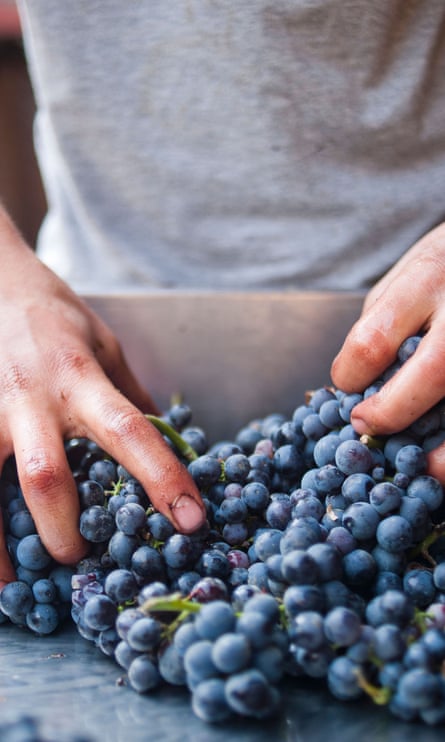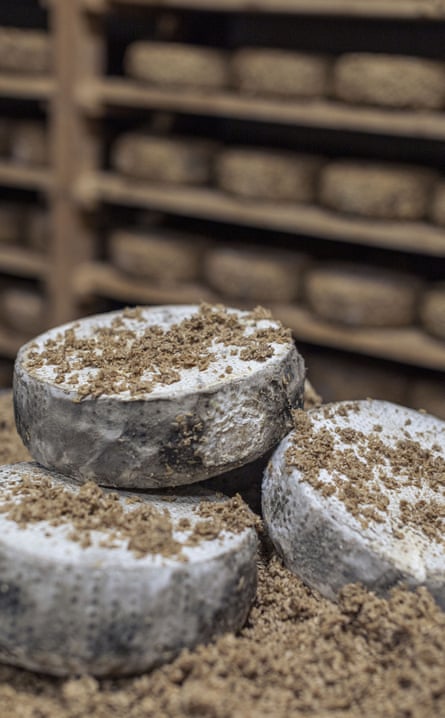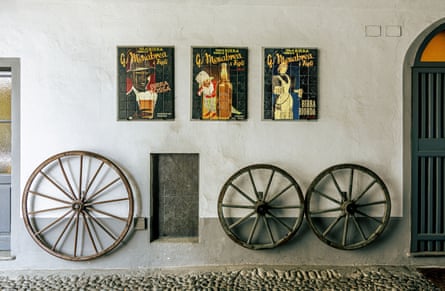Piedmont’s food and drink is a product of its position between the Italian Alps and coastal Liguria. Because of its unique location, Piedmont was once part of the via del sale or “salt road”, a historic trading route that connected the mountains to the sea. Hence the presence of hardy ingredients in Piedmontese dishes such as the popular vitello tonnato – thin slices of marinated veal served in a rich sauce of tuna, capers and anchovies.
Many other Italian favourites were first created here. Sometimes necessity was the mother of invention. For instance, gianduja: a chocolate and hazelnut paste originated in early 19th-century Turin when cocoa shortages inspired a chocolatier to experiment with recipes that included locally grown nuts.
But for those who are new to the riches of the region, what are the other absolute must-tries from Piedmont? You could start with the nebbiolo grape, which thrives in the southern Langhe district, where steep hillsides are criss-crossed with vines. The best known nebbiolo wines are barolo and barbaresco, prized for their rich tannins and delicate, floral flavour.
“What makes barolo and barbaresco so special is that the nebbiolo grape is very picky about where it will grow,” says Anna Savino, who founded the Barolo Wine Club in 2019. “These grapes are very terroir-driven; they pick up on the smallest changes from hillside to hillside.” Savino chooses a selection of barolos and barberescos from small, family run wineries in Piedmont to ship to subscribers around the world.



“The grape and the terroir make a magic match,” adds Aldo Vacca, general manager of a wine cooperative set up in 1958 in the village of Barbaresco, who explains that the secret is the balance of clay, calcium and sand in the earth. “There have been several attempts to grow the nebbiolo grape in other parts of the world, but the grape hasn’t achieved the same status outside Piedmont,” he says. Each autumn, 54 farmers in the wine co-operative deliver their grapes to the facility owned by Produttori del Barbaresco in return for a share of the profit from the wine.
Such hearty red wines call for good Piedmontese fare to accompany them, says Savino. Dishes such as stracotto di fassona Piemontese (Piedmont braised beef), or risotto with rare white truffles from nearby Alba, Langhe’s largest town, or fonduta – Piedmont’s egg-yolk enriched take on classic Swiss fondue. Other classic Piedmontese dishes include tajarin, a silky thin, hand cut pasta made from egg yolks and served either plain with butter, in a broth or with a rich ragu. For something lighter, Savino suggests sipping a barbaresco while nibbling on the region’s famous hazelnuts (lightly toasted, of course).

When it comes to risotto, top chefs rate Acquerello, an aged carnaroli rice that is grown and milled by the Rondolino family on the Colombara farm on the plains of Vercelli, north-east of Turin. Acquerello – or “watercolour” in English – is aged for one year in temperature-controlled silos, which enables the sugars in the starches to develop a nutty sweetness and the grains to harden, making them less absorbent than other rice varieties. This means risotto made with Acquerello rice holds its shape better. “Our rice is the only white rice with the nutrients of brown rice,” says Atea Tomisic, from Riso Acquerello.
Piedmont is also home to Birra Menabrea, a beer crafted in Biella, a town at the foothills of the Italian Alps, by the same family since 1846. Around 15 years ago, the brewery’s location across the road from a historic local cheesemaker called Botalla prompted a collaboration that resulted in Italy’s first cheese made with beer: sbirro.
“We are neighbours,” says Botalla Formaggi’s Alessandra Vigliani, explaining the connection between the two companies. “Underneath the street, our cellars are divided by a single wall. The idea of creating something started from the strong friendships between the Bonino family [behind Botalla] and the Thedy family [behind Birra Menabrea]. They wanted something to represent both companies.”
Sbirro is made from cows’ milk from two local breeds that yield only 15 litres a day, compared with a typical yield of 50 litres. When the fresh cheese is made, it is washed in the brewery’s signature lager. For extra flavour, each cheese is coated in spent grains leftover from the brewing process and aged for 60 days.
Visitors to Biella, which is also known for its cashmere, can learn more about the partnership between Menabrea and Botalla at MeBo, a museum created to explore the history of both companies and the production process behind their products. “Sometimes people don’t understand how much work goes into what they are eating and drinking. We feel it is important to show the connection with our territory,” says Vigliani. A trip to the museum, which is open from Wednesday to Sunday, can include a guided tasting over lunch where visitors can sample six different types of cheese and two beers.



As well as wine and beer, Piedmont is renowned for its aperitifs, specifically vermouth, a fortified wine that has been produced in Turin since the late 18th century. It became a popular drink to offer visitors to the royal court of Savoy, says Roberto Bava, who owns Asti-based Cocchi, which produces vermouths, grappas and sparkling wines from Piedmont.
“By law, vermouth needs to be 75% wine. Bitter herbs, such as artemisia, flowers and spices are added. Vermouth di Torino is the only aperitif to have an appellation of origin,” says Bava, which means it must be made with wine from Piedmont. “Italy isn’t only about Vespas and Ferrari but also about the 10 minutes you keep for yourself before lunch, when you read a newspaper, relax and drink this splendid drink with a slice of lemon,” he adds.
Find your local Menabrea stockist

